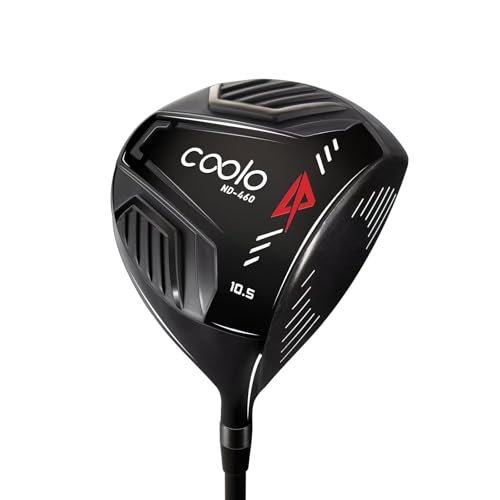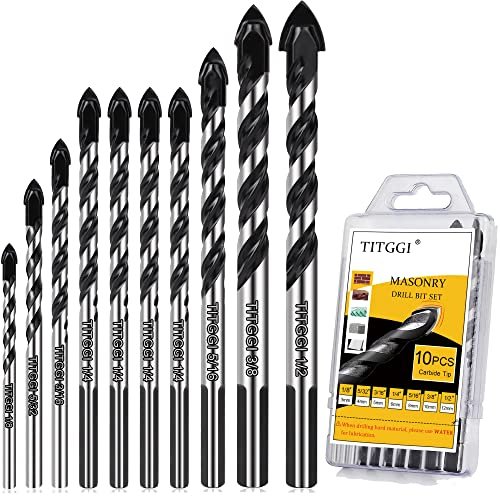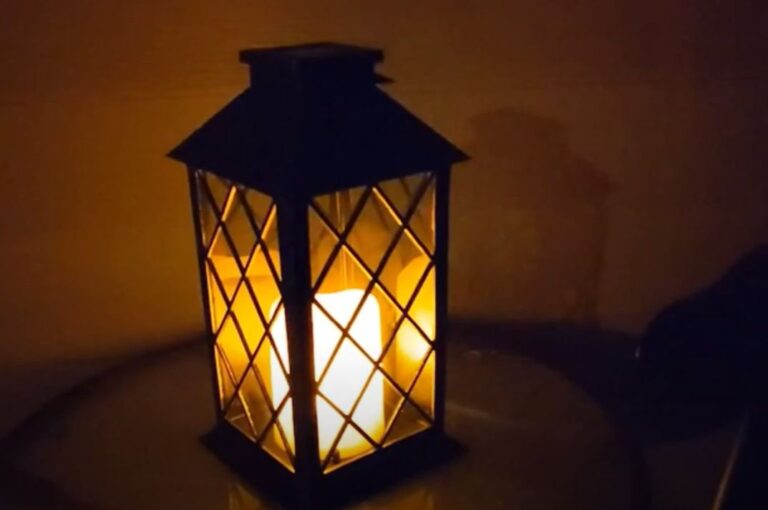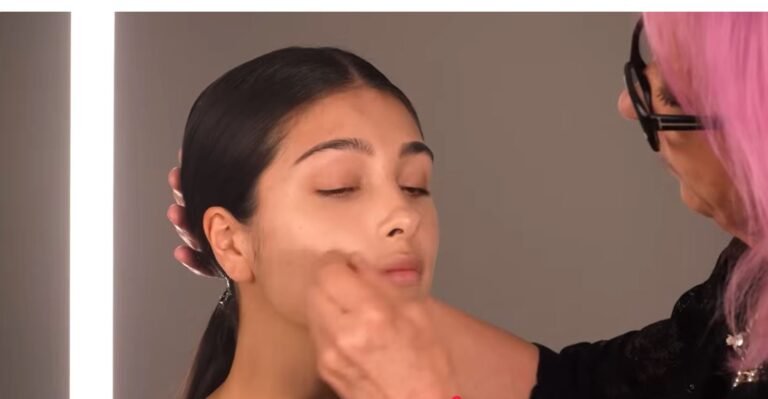Polarized Sunglasses vs Anti-Glare Glasses
Protecting your eyes, both polarized sunglasses and anti-glare glasses offer unique benefits but they’re not the same.
If you’ve ever been confused about which to choose for driving, computer work, or outdoor activities, you’re not alone.
While both options reduce visual discomfort, they solve different problems using different technologies.
Polarized sunglasses are designed to block harsh glare from surfaces like water, roads, or car hoods. They’re ideal for outdoor use.
In contrast, anti glare glasses (also called anti-reflective or AR-coated glasses) are made to reduce reflections on the lens surface, which is especially helpful for screen use or night driving.
After Using KALIYADI Polarized Sunglasses
I work long hours on the computer and often drive during the day. My eyes used to feel dry, strained, and tired by the afternoon.
I picked up these KALIYADI sunglasses hoping for a simple fix. Honestly, I didn’t expect much but they surprised me.
Right out of the box, they felt lightweight but sturdy. I have a wider face, and they fit just right—no tight pinching or loose sliding.
The semi-rimless frame looks sharp without being too flashy.
What really impressed me was the lens. There’s a slight yellow tint that softens harsh screen glare and outdoor sunlight.
Within an hour, my eyes felt relaxed no more constant blinking or redness.
The photochromic lens darkens in bright light and stays lighter indoors. Perfect for when I go from working inside to running errands in the sun.
They also block UV rays and blue light. I used the included blue light test card it actually works.
These aren’t miracle glasses, but they’ve helped reduce my eye fatigue a lot.
One downside? They don’t have anti-glare coating on the inside, so strong lights can reflect slightly.
If you’re like me always on screens or behind the wheel these are a smart buy. I just wish I bought them sooner.
Pros 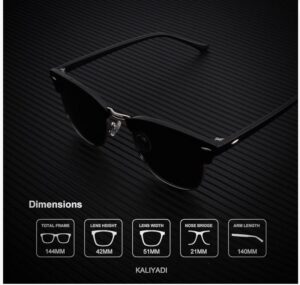
-
Comfortable fit, even for wider faces
-
Lightweight but feels durable
-
Photochromic lens adapts to sunlight
-
Great for reducing screen glare and UV protection
-
Comes with case, cloth, and blue light test card
Cons
-
Lacks interior anti-glare coating
-
Slight yellow tint may take getting used to
KALIYADI Polarized Sunglasses Review: Real Experience After Daily Use
I bought these KALIYADI sunglasses mostly for driving and weekend fishing trips. But they quickly became my go-to pair for nearly everything outdoors.
The frame feels light but strong. It doesn’t pinch my temples or slide down my nose. Even after wearing them for hours, I don’t feel pressure or discomfort. The spring hinges help a lot if you have a wide face like mine.
The polarized lens makes a big difference in bright sunlight. Glare from the road or water is almost gone.
It blocks harsh light without making the world look unnaturally dark. The view through these lenses is sharp, with colors that feel more natural.
I wore these while driving cross-country for a family trip. My eyes stayed relaxed even after hours on the road. I used to squint constantly, but not anymore. These really reduce eye fatigue.
Another plus is the value. You get three pairs in the box, each with its own pouch and cleaning cloth. I kept one in my car, one in my fishing bag, and gave one to my brother.
If I had to find a flaw, it’s that there’s no inside anti-glare coating. In certain angles with bright backlight, I noticed a little reflection. Not a deal-breaker, but worth noting.
If you need a solid pair of affordable polarized sunglasses, this is it. I wish I found them earlier. Let me know how they work for you.
Pros: 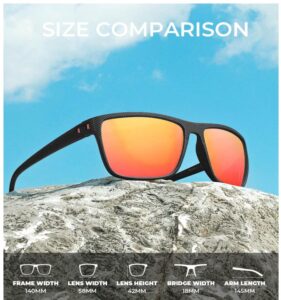
-
Comfortable fit for all face sizes
-
Blocks glare and UV rays effectively
-
Lightweight and stylish design
-
Great value with multiple pairs
-
Ideal for driving, fishing, or casual wear
Cons:
-
No inner anti-glare coating
-
Minor tint change may take adjusting
After Using STORYCOAST Polarized Sports Sunglasses
I’ve worn the STORYCOAST polarized sports sunglasses for over two weeks now. They quickly became my go-to for cycling, fishing, and weekend drives.
The first thing I noticed was the clarity. The polarized lens really cuts down glare, especially during bright afternoons or when driving into sunlight. My eyes feel less strained, even after hours outside.
The lenses give colors a richer, more natural tone. I fish often, and I could actually see better into the water. That made a difference in how quickly I spotted fish movement under the surface.
The frame is surprisingly tough. I dropped them once on gravel and thought they’d crack. They didn’t. No scratches either. For something this light, the material feels durable.
The comfort is another win. These sit snugly without squeezing my face. The nose pads stay in place without sliding when I sweat. I wore them for a full day hiking and forgot I even had them on.
The packaging impressed me. You get two pairs, a cleaning cloth, soft pouch, and even a polarized test card. It’s clear they thought of the little things.
If I had to nitpick, I’d say they could add an anti-reflective coating on the inside. I noticed a bit of internal glare at certain angles, but nothing that ruins the experience.
For the price, these sunglasses feel like a steal. Whether you’re into biking, hiking, or just want solid eye protection, give them a shot. I’d buy them again without hesitation.
Pros: 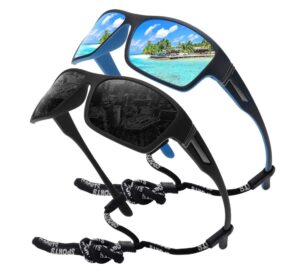
-
Blocks glare and UV rays effectively
-
Strong, lightweight, and impact-resistant frame
-
Clear vision during fast movement
-
Great value with bonus accessories
-
Stylish for both men and women
Cons:
-
No anti-glare coating on inner lens
-
Limited tint variety for fashion use
What’s the Difference Between Polarized and Non-Polarized Sunglasses?
Polarized sunglasses have a special chemical coating that filters horizontal light waves, which are the main cause of glare. These are especially useful when you’re near reflective surfaces like water, glass, or snow.
Non polarized sunglasses, on the other hand, simply reduce the overall brightness. They don’t filter out glare so although they may make things darker, they don’t necessarily improve clarity or contrast.
Bottom line: Polarized lenses block glare and reduce brightness. Non polarized lenses only reduce brightness.
Tried and Tested: STORYCOAST Polarized Sports Sunglasses Review
I started using the STORYCOAST Polarized Sports Sunglasses last month during a hiking trip in Colorado. From the first day, I noticed the difference in how relaxed my eyes felt under bright sun.
The UV400 polarized lenses block harsh rays and remove annoying glare. Whether I’m fishing by the lake or riding my bike, the view stays clear and soft. Colors look real, not overly tinted or distorted.
The frame feels feather-light. I’ve worn them for long hours while running trails and barely noticed they were on. They don’t slip, even when I sweat. The nose pads sit snugly without leaving marks.
I’ve dropped them once on concrete, but they didn’t crack or scratch. That surprised me. These aren’t cheap gas station glasses. They feel like gear made for people who move.
I also appreciate the added hydrophobic coating. After a sudden rain during a cycling session, the lenses shed water without smudging. That helps when speed and visibility matter.
One downside is the inside glare in certain lighting. While outdoors, it’s rarely a problem, but under streetlights or sharp indoor reflections, you might notice some bounce-back.
If you do a lot of driving, cycling, or outdoor sports, these glasses will make your day more comfortable. And for this price, you get great extras like a case, lens cloth, and even a lanyard.
Pros: 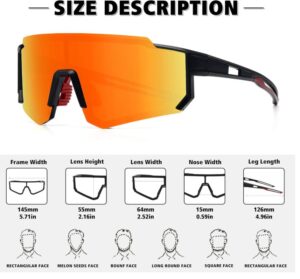
-
True polarized lens with UV400 protection
-
Comfortable fit for long outdoor use
-
Lightweight and durable design
-
Clear and vivid view in all weather
-
Great value with accessories included
Cons:
-
Minor inside lens glare in artificial light
-
Limited fashion appeal for formal use
Are Polarized Sunglasses Better Than Non-Polarized Shades?
In most outdoor situations, yes, polarized sunglasses are better. They provide clearer vision, better color contrast, and reduced eye strain making them ideal for:
-
Driving
-
Fishing
-
Boating
-
Skiing
-
Cycling
However, they’re not always perfect. Some people find it hard to read LCD screens with polarized lenses, and pilots are advised not to use them due to interference with cockpit instruments.
So if you need glasses mainly for outdoor glare reduction, go with polarized. If you just want general sun protection or fashion eyewear, non-polarized may be enough.
What Are Anti-Glare Glasses, and Are They the Same as Polarized?
No. Anti-glare glasses (also known as anti-reflective or AR-coated glasses) are different. These are typically clear or prescription lenses designed for indoor use—like working on computers or night driving.
They reduce reflections on the surface of the lens, making your vision clearer and reducing eye fatigue from screens or headlights. They do not block glare from the environment like polarized lenses do.
Think of it this way:
-
Polarized sunglasses block glare coming at you.
-
Anti-glare glasses reduce glare on your lenses.
How to Identify Genuine Polarized Lens?
Want to check if your sunglasses are truly polarized? Here are 3 quick tests:
-
LCD Screen Test
Look at your phone or laptop screen through the lenses. Then rotate the glasses slowly. If the screen darkens or shows a rainbow effect at a certain angle, your lenses are polarized. -
Double Polarized Lens Test
Hold two pairs of sunglasses and place one at 90 degrees to the other. If the lenses darken where they overlap, they are both polarized. -
Reflection Test
Go outside and look at a shiny car hood or water surface. Tilt your head side to side. Polarized lenses will reduce the sharp glare much more than regular lenses.
Polarized Sunglasses vs Anti-Glare Glasses
1. What’s the main difference between polarized and anti-glare glasses?
Polarized sunglasses reduce glare from external surfaces like water or roads.
Anti-glare glasses reduce reflections on the lens surface itself. One is for outdoor glare, the other is for screen or indoor lighting clarity.
2. Can I wear polarized sunglasses indoors?
Not recommended. Polarized lenses reduce brightness and may distort digital screens or indoor lighting. They’re made for bright outdoor environments.
3. Are polarized sunglasses better for driving?
Yes. Polarized sunglasses cut glare from road surfaces and car hoods, making daytime driving safer and more comfortable.
4. Do anti-glare glasses protect against UV or sunlight?
No. Anti-glare glasses help with screen use and indoor lighting but don’t block UV rays or sunlight like polarized lenses.
5. Can I use anti-glare and polarized features in one pair?
Yes, some high-end sunglasses combine both. You can have polarized lenses with an anti-reflective coating on the back for even better clarity.
6. How do I know if my lenses are polarized?
Look at an LCD screen through the lenses and rotate them. If the screen darkens or changes color at certain angles, the lenses are polarized.
Conclusion: Which One Should You Choose?
-
Choose polarized sunglasses if you spend time outdoors, drive often, or deal with harsh sunlight and reflections.
-
Choose anti-glare glasses if you need clear lenses for screen use, night driving, or working under bright indoor lighting.
Each type serves a different purpose. Some people even use both: polarized sunglasses for outdoor daytime use and anti-glare glasses for screen-heavy tasks indoor
- 10 Best Adhesive Remover for Auto Paint — for Smart Buyers 2026 - January 11, 2026
- 10 Best Acrylic Paint Markers for Coloring: That Fits Your Needs 2026 - January 11, 2026
- 10 Best Adhesive for Diamond Painting– Essential Crafting Solution 2026 - January 11, 2026

